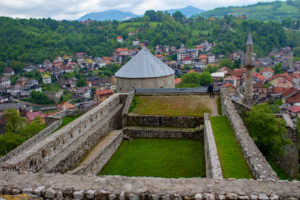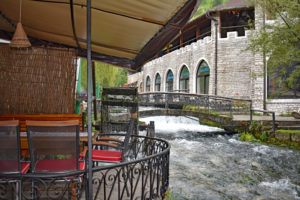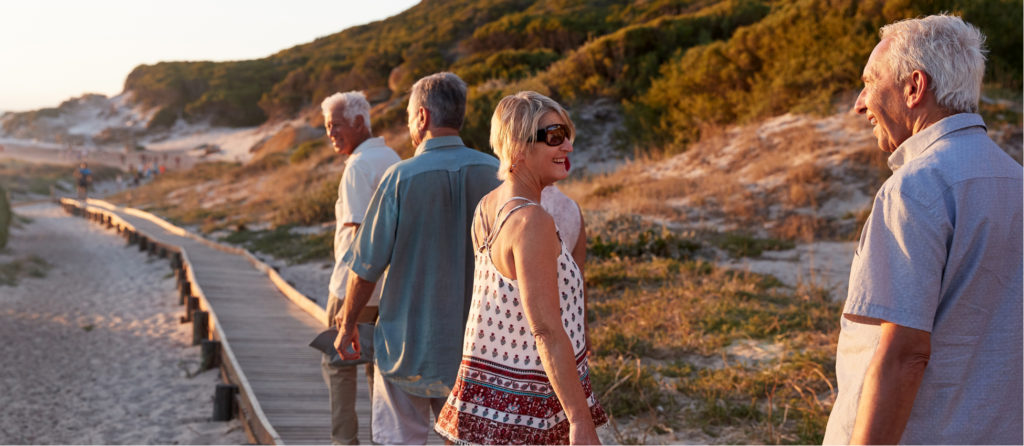The ancient city of Travnik, in Bosnia and Herzegovina, is located between Sarajevo, where we’d stayed, and Jajce, where we were going. It was an ideal half-way stop.
Having parked near a hillside cemetery full of white headstones, a sight sadly so familiar in the country, we walked a short distance to the small old town with its Ottoman architecture and pedestrianised street. Here we found what is known locally as the ‘coloured mosque’, Sulejmanija/Šarena, because of its brightly coloured paintings on the exterior walls. It’s said to be one of the most beautiful in the Balkans. Unusually the exterior arches on the ground floor were being turned into shops with the rent being used to support the building’s upkeep.
Having read Bridge on the Drina by Ivo Andrić, and visited the bridge in Visegrad, we were keen to see the Ivo Andrić Memorial Museum, opened in 1974. Andrić was born in Travnik and the museum is in the style of the house where he was born. A young man, with good English, took us through the three main rooms. The first was furnished in various styles with an ornately carved cupboard and examples of what the bedroom would have looked like. The second, was a study dedicated to the Chronicles of Travnik and finally, the library displayed copies of his books published in 49 languages. Three of the most famous, Bridge on the Drina, Chronicles of Travnik and Miss Lady of Sarajevo, were all published at the end of the war in 1945, but it wasn’t until 1961 when he was awarded the Nobel Prize in Literature (the only Yugoslav to be awarded this honour). Photos throughout depicted the ceremony and there was a brilliant wire sculpture of his head.
A steep road led us to the medieval fortress built in the 15th century (entrance fee 2 Marks/90p). Pausing to catch our breath gave us chance to look down over the minarets of numerous mosques and spy one of the town’s two clock towers: it’s the only city in Bosnia and Herzegovina to have two. At the top, were stocks which our guide kindly got into, and a ‘lord and lady’ photo opportunity. Further in and up, we entered a circular two storey stone building with traditional costumes worn by Catholics, Orthodox and Jews displayed on the ground floor. Upstairs were various historical storyboards and in a small room opposite, a craft workshop with goods for sale. We continued to the very top of the fortress, where the flag was flying. Here we had superb views of the town and were able to look down into a tall circular pit which had been used as a jail. We returned a different way down via more precarious steps and at the bottom, found story boards depicting native flowers, birds, animals and trees.
Plava Voda, meaning blue waters, is the stream which flows, or rather gushes, through the centre of town and in good weather it shows why it is named – for the vibrant water colour. Restaurants and cafes lined the river and our guide chose Konoba Plava Voda and a table on the water’s edge near a water wheel. Here we enjoyed the traditional Bosnian dish of ćevapi (small meat sausages) and salad. After lunch we concluded our visit by strolling up the paved path running alongside the stream to see the pools of freshwater brown trout, a speciality of the area.





